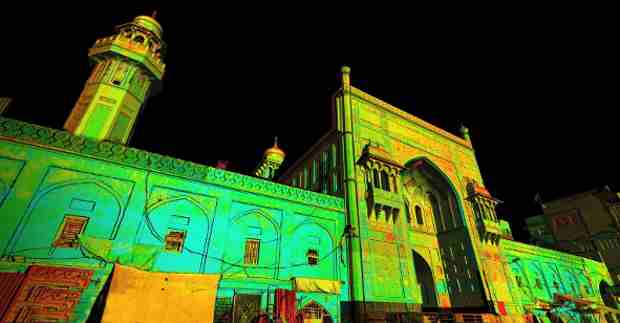CyArk to Digitally Preserve At-Risk Heritage Sites in Syria
CyArk, a non-profit organization that digitally preserves cultural sites, announced Tuesday its Project Anqa.
It is a joint initiative with the International Council of Monuments and Sites (ICOMOS) to digitally document dozens of at-risk sites in Syria, Iraq and the Middle East.
“The beloved heritage in the ancient ‘Cradle of Civilization’ is under threat, evidenced by the destruction of landmarks at Palmyra and Mosul,” said Ben Kacyra, president and co-founder of CyArk. “The digital technology exists to preserve measurable 3D models of these historical sites before they are damaged or destroyed. It’s only fitting we announce Project Anqa here in Berlin, which has such a long and rich tradition of archaeology and heritage preservation.”
[ U.S. Willing to Work with Russia to End Civil War in Syria ]
CyArk and ICOMOS, a non-governmental, global organization dedicated to the conservation and protection of cultural heritage sites, will work with local experts in the Middle East to record cultural landmarks using reality-capture technologies such as 3D laser scanning, photogrammetry, and traditional survey. Scan results from Ziggurat of Ur in Iraq, the first Anqa site digitally captured, were unveiled at CyArk’s summit in Berlin.
At a gathering of more than 250 foreign ambassadors, government officials, cultural representatives, and corporate executives representing 35 countries at the Berlin State Library, CyArk unveiled this year’s historical sites officially added to the CyArk 500 Challenge, its international campaign to digitally preserve 500 heritage sites in five years.
[ ISIS Terrorists Damage Cultural Heritage Sites in Iraq ]
In the two years since the launch of the 500, one-third of the slots have been assigned with projects approved by an international council of advisors. Working with governments and local partners, CyArk has completed scans for almost 20 percent of its overall goal. Recently completed projects include the Brandenburg Gate (Germany), Ancient Corinth (Greece) and the Ziggurat of Ur (Iraq).
The data collected at each location generates accurate blue prints that can be used to rebuild a site if damage or destruction occurs. Millions of people can virtually experience the digital monuments via a data library on CyArk’s website. Today, nearly 100 sites are available for the public and educators to experience free virtual tours, 3D models and educational lesson plans.
As progress towards the 500 continues, CyArk is also adding storage infrastructure to ensure the protection of, and continued access to, a staggering amount of digital information.
It takes about 10,000 gigabytes of data, or the equivalent of 200 trucks of paper, to digitally preserve each site. To manage this tremendous amount of data from field work to an archive, CyArk relies on its partnership with leading companies in the technology industry.
For example, Seagate Technology is now providing CyArk with enterprise storage drives, business NAS systems and rugged mobile hard drives that capture, centralize and archive massive data files.
Seagate’s technology helps CyArk provide a “museum of the future,” in which millions of people around the world get the opportunity to virtually experience the world’s historical sites in interactive and engaging ways.
In addition, Iron Mountain Incorporated is protecting and preserving digital scans of each monument, archiving the data in a highly secure underground records and data storage facility in western Pennsylvania, U.S.
Located 220 feet underground in a former limestone mine, the facility is home to other important and priceless information assets and cultural collections, including rare photo collections and historical documents.
CyArk requests the nomination of additional sites for preservation and the pledging of funds towards its 500 Challenge through donations via the organization’s website.
CyArk is an international nonprofit organization that uses 3D laser scanning, photogrammetry, and traditional survey techniques to create an online, 3D library of the world’s cultural heritage sites before they are lost to natural disasters, destroyed by human aggression, or ravaged by the passage of time.
Spurred by the Taliban’s destruction of the 1600 year-old Bamiyan Buddhas in Afghanistan, CyArk was founded in 2003 to ensure that the world’s collective heritage is available to future generations, while also making it uniquely accessible today.












